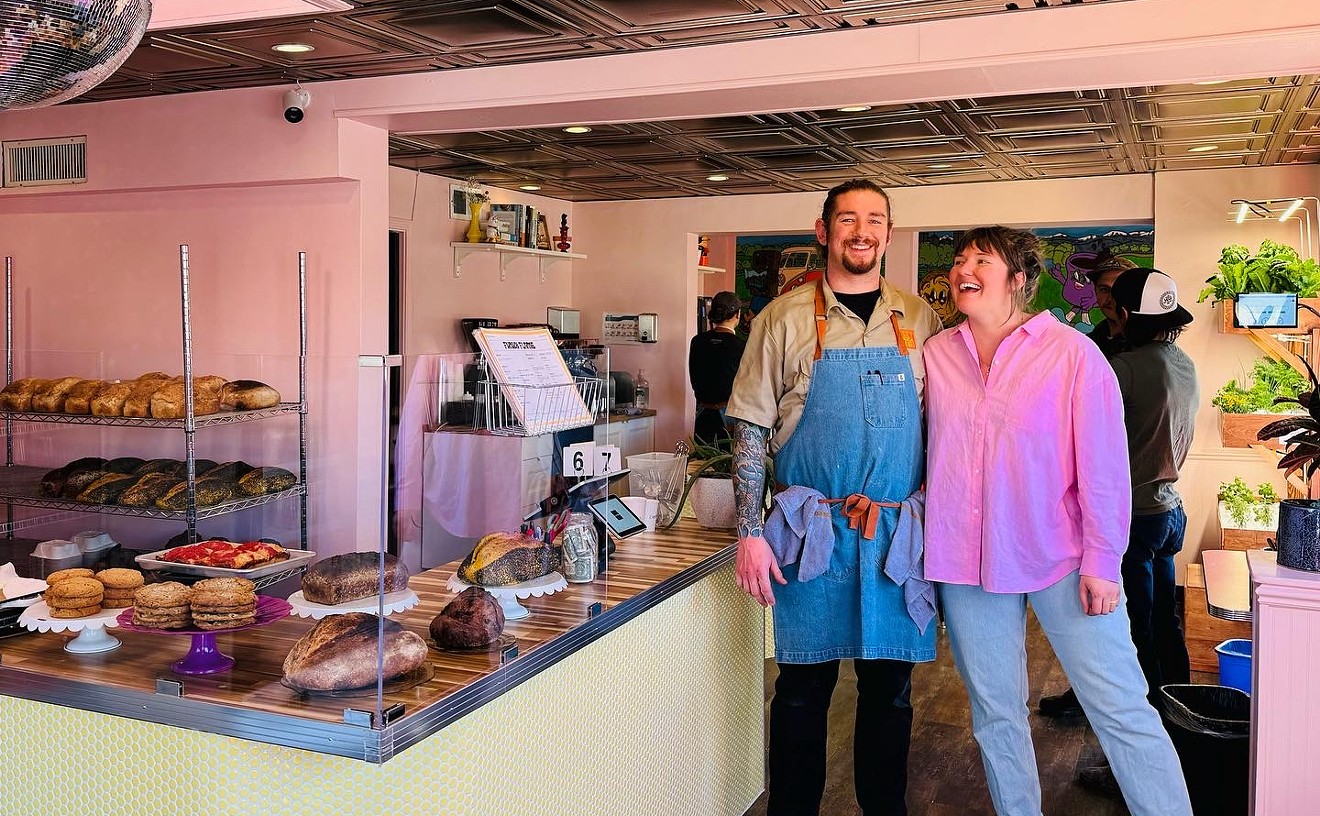Nearly ninety buffalo are in Denver right now for the National Western Stock Show -- 57 were unloaded Tuesday and another thirty or so will lumber into the grounds today - as the the National Bison Association holds its annual conference and several other big events.
On Thursday, former media mogul Ted Turner will give the keynote address to 250 bison ranchers from around the country. (Turner is the world's largest bison producer, with 45,000 head on fourteen ranches around the United States.) On Saturday at noon, the association will host its marquee event, the Gold Trophy Show and Sale the National Western complex.
And the bison ranchers in town should have smiles on their faces, says National Bison Association executive director Dave Carter, because consumer demand is growing.
"Ten years ago, this industry was in trouble," he says. While restaurants were serving a lot of bison tenderloins and New York strips, ranchers were having trouble selling the other 90 percent of the animal. So the federal government stepped in, helping to prop up the business by buying $10 million worth of ground buffalo meat at market rates and then serving it in school lunches and on Indian reservations nationwide ("Where the Buffalo Roam," January 6, 2000).
"That really helped. It cleaned up a lot of herds, and since then we've been growing," Carter explains. Over the years, bison meat has caught on with foodies, with the grow-local crowd and with nutrition experts, who know that bison meat is leaner than beef. In addition, restaurants are serving a lot more buffalo burgers, as well as bison chuck roasts, short ribs and other cuts. There is even a line of bison leather boots and hats.
"Those things have helped make this industry sustainable," Cater adds, and the more sustainable it is, the more bison there will be. In fact, "the best way to save the buffalo is to eat it," he says, echoing what has been the industry's rallying cry.
There are now nearly 200,000 buffalo roaming 4,400 ranches in all fifty states, and the National Bison Association is looking to recruit new ranchers to meet demand, which has grown by at least 10 percent every year for the past six years.
Today, though, Carter's primary challenge will be unloading the remaining thirty bison - which are still undomesticated animals despite their status on ranches - from the trucks, running them through chutes, checking them in and registering them.
"There's a lot of psychology that goes into how these animals think," he says. "But basically, every time an animal moves forward, you close a gate behind it."











